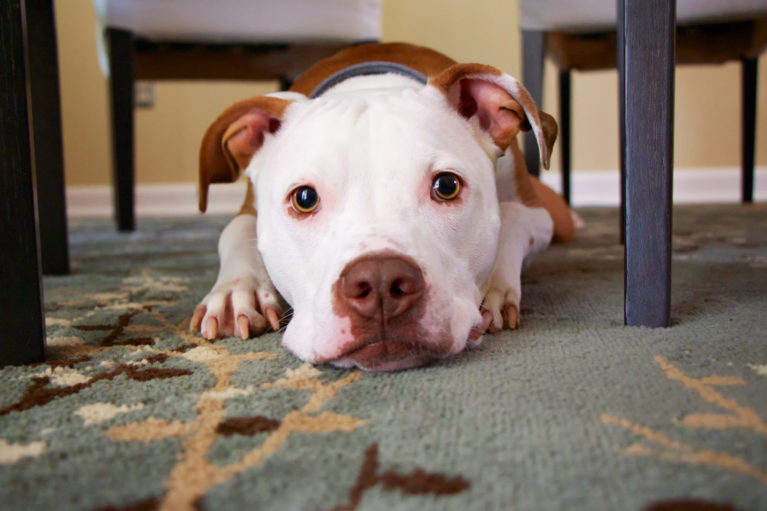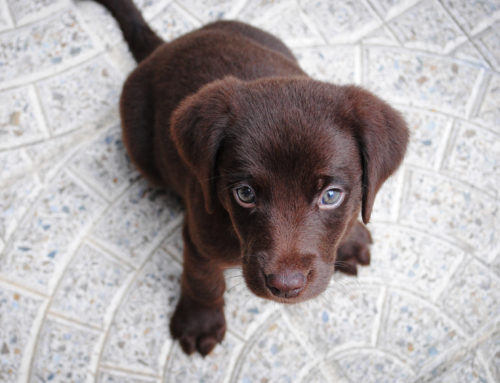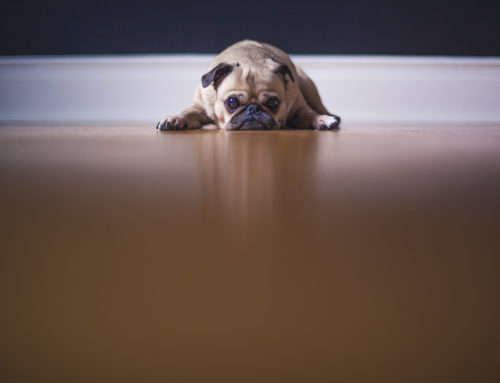Dogs with separation anxiety can wreak havoc on your home. Destructive chewing, urinating and defecting, howling, barking, whining so much the neighbors are annoyed; all of these are characteristics of separation anxiety. Dogs who are otherwise friendly, calm, and fully house-trained are suddenly transformed the minute you leave your house into panicky, loud creatures you barely recognize. True separation anxiety is as devastating for the dog as it is for you, and can have a severe psychological impact on everyone. It makes sense in the wild; baby animals cry if they get separated from their pack so they can be found, for example. That information doesn’t help your neighbor be less angry when your dog has been howling all day, though. So short of quitting your job, never traveling again, and becoming house-bound, how can you help your best friend feel better?
Is It Really Separation Anxiety?
First, it’s important to remember that much of how your dog reacts when you’re gone is due to their past and their genetics, not something you did or didn’t do. And there are some things you can do with a young puppy to help prevent separation anxiety from ever becoming an issue. Try to make the occasions when you leave happy for the puppy. Leave him a peanut butter stuffed Kong or a favorite toy that only comes out when you’re gone. (Maybe make this toy that obnoxious squeaky ball that drives you crazy). Hide things around the house or crate for him to find. If you’re going to be gone for a long time, make sure the dog is tired out, physically and mentally. If they’re sleeping, they’re not chewing up that book you’ve been looking forward to reading and left on the coffee table after only reading ten pages. Trust me on this, I speak from experience.
But also keep in mind that you may not be dealing with an actual case of separation anxiety. Just because you come home and find Fido chewing on that book doesn’t mean he’s suffering from separation anxiety. He might love the taste of paper. He might be bored. He might still be a puppy that chews on everything no matter what you do. Barking isn’t always a sign of anxiety, either. If there’s relative silence broken by the occasional flurry of frantic barking, it’s less likely to be separation anxiety and more likely a bird just flew by the window. Or a squirrel ran by. Or the wind blew. Or the grass rustled. Or any of the dozens of things dogs bark at. Barking as a result of separation anxiety is usually more measured, more even. A constant, monotone bark that breaks your heart.
Once You’re Sure It’s Separation Anxiety
For low-level separation anxiety (whining, pacing, shaking), there are a few things you can try. You can be as calm as possible when you leave and come back inside. Even ignore Fido for the first few minutes after you return before you calmly greet him and pet him. Make sure he knows that departures and arrivals are no big deal. If you crate your dog, leave something in the crate that smells like you. You can also talk to your vet. There are some medications that can help. Doggy Prozac – it’s definitely a thing.
If your dog has more severe separation anxiety, you should certainly talk to your vet. Severe separation anxiety can manifest itself in a variety of ways, one of which is the dog trying to escape their environment. Scratching at doors and windows, causing physical damage to themselves (torn nails, scraped up paws), and your vet should be informed of these behaviors. He or she may be able to prescribe something that’s stronger than the standard variety anxiety drug. Your vet can also make sure the destructive behavior isn’t being caused by something physically wrong with your fluffy friend. A few things you can try at home include leaving the dog somewhere less confining than a crate. A room with a window where he can see outside can help. You can also try to ease the dog into your absence by taking him to a day care or dropping him off with a neighbor or family member. Make him start to realize that you leaving doesn’t mean he’s being abandoned. If he starts to get anxious as soon as you start your leaving routine, do your routine out of order. Or do some of it without leaving at all. Put on your coat then watch TV. Grab your keys then make dinner. Teach your pooch that these behaviors of yours don’t always mean departure.
Other Things To Remember
Dogs don’t have a sense of time the way humans do, which is why he’s just as excited to see you whether you’ve been gone all day or just went to check the mail. Dogs live in the moment, and when they’re experiencing true separation anxiety, all they know is that at that very moment, their pack leader is not there to take care of them. It’s a terrifying feeling, and they don’t know how to deal with it. But you can help them.
Most of the time, treatment for separation anxiety is a combination of medication and behavior training. Even something as simple as training your dog to “stay” at longer and longer distances can help them get used to not being with you at all times. As always, the best advice is to start with your vet. What about you? Have you used any of these tips in helping correct separation anxiety in your dogs? Do you have some other tips to share?









Recent Comments